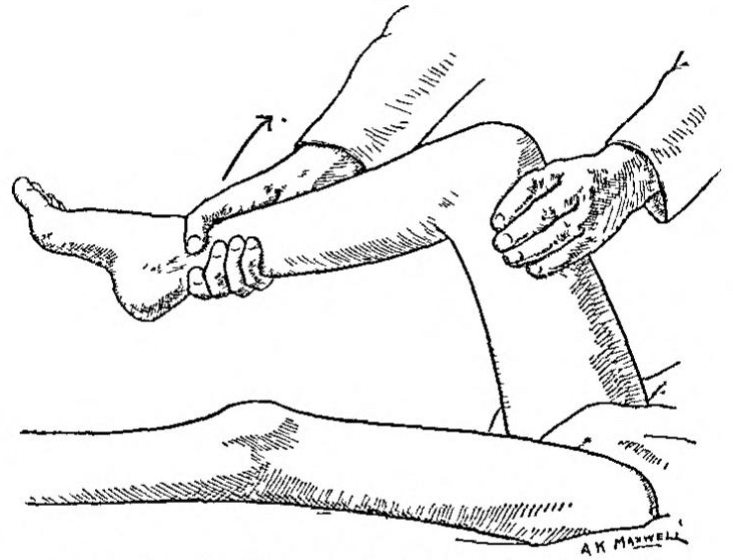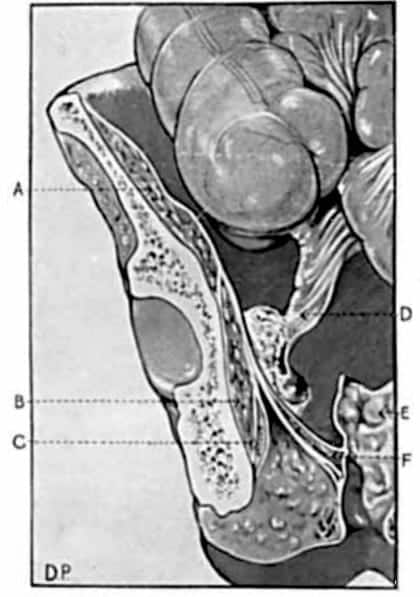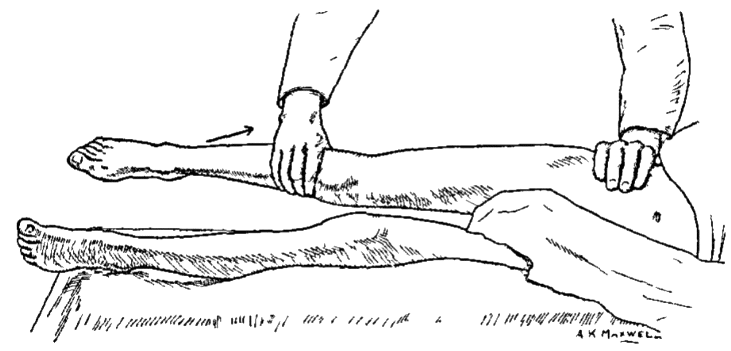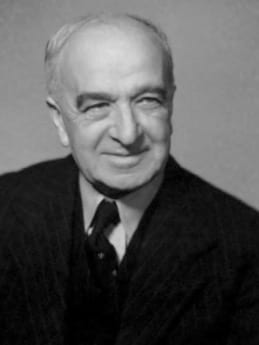Vincent Cope
Sir Vincent Zachary Cope (1881-1974) was an English surgeon and medical historian
Cope’s major work ‘The Early Diagnosis of the Acute Abdomen’ was first published in 1921; went to 14 editions over the next 50 years; with the final revision by Cope aged 90, due to steady demand.
On a slightly different tangent, Cope compiled light verse with a serious message in ‘The Diagnosis of the Acute Abdomen in Rhyme’ (1947) with under the pen name ‘Zeta’ and with illustrations by Peter Collingwood.
The book outlined clinical examination and diagnostic signs Cope believed had ‘never previously been recorded or to which insufficient attention is usually paid’ including the localizing diagnostic value of phrenic shoulder pain, the obturator test, the area of hyperaesthesia caused by a distended inflamed appendix, the pathognomonic axillary area of liver resonance in cases of perforated ulcer and the psoas extension test as examples.
Biography
- Born on February 14, 1881 in Hull, England
- 1905 – MB BS (Hons) St Mary’s Hospital Medical School
- 1909 – MRCS, FRCS
- 1912 – Surgeon Bolingbroke Hospital
- 1914 – Royal Army Medical Corps at the 3rd London General Hospital
- 1916-1919 Served in Mesopotamia
- General surgeon at St Mary’s Hospital, London [Cope’s name lives on in the Zachary Cope ward]
- 1951 – Honorary Fellow (and librarian) of the Royal Society of Medicine
- 1953 – Knight of the British Empire (KBE)
- Died on December 18, 1974 Oxford, England
the dexterous hand must not be allowed to reach before imperfect judgement…
Medical Eponyms
Cope obturator test (1919)
[aka thigh-rotation test; obturator test] The examiner stands to the right of the patient with the right thigh slightly flexed. The limb is then fully rotated at the hip, first internally and then externally.

The right thigh is slightly flexed (so as to relax the psoas muscle) by the surgeon, who stands on the right of the patient: the limb is then fully rotated at the hip, first internally and then externally, so as to put the obturator internus through a full range of movement. The sign is positive if the patient complains of hypogastric pain when the limb is moved in this manner
Cope 1919
May be positive with conditions causing irritation to the obturator internus muscle e.g. inflammatory fluid in the pelvis, abscess, or perforated appendix. An inflamed appendix located in the pelvic brim may cause a positive test when apposed against the obturator internus muscle. Cope obturator sign sensitivity (8%); specificity (94%) in diagnosing acute appendicitis. [Berry]
Since the fascia covering the obturator internus is fairly dense, the test is not positive unless the inflammation is considerable; and, with a positive result, one always expects the appendix to be adherent to, or even an abscess to be contiguous to, the fascia. I have found this sign of assistance not only in cases of appendicitis, but also in other pelvic conditions such as rupture ectopic gestation, and I have no doubt that it will often prove of value in doubtful cases
Cope 1919

Figure 42: Relationship of pelvic appendix to the obturator internus muscle. An appendicular abscess seen in contact with the fascia over the obturator internus. Cope 1919
Cope Psoas test (1921)
The patient is lying in the lateral decubitus position opposite the side where the pain is located. Extension of the thigh causes pain. [aka Ilio-psoas rigidity; psoas extension test; Obraztsova sign]
It is well known that if there be an inflamed focus in relation to the psoas muscle the corresponding thigh is often flexed by the patient to relieve the pain. A lesser degree of such contraction (and irritation) can be determined often by making the patient lie on the opposite side and extending the thigh on the affected side to the full extent. Pain will be caused by the maneuver if the psoas is rigid from either reflex or direct irritation (Fig 6.). The value of the test is diminished if the abdominal wall be rigid. The psoas-test is not so easily elicited when the inflammation becomes subacute.
Cope 1921

May be positive in retrocecal appendicitis as well as primary/secondary psoas abscess. In appendicitis, the inflamed retrocecal appendix lying against the psoas muscle. In severe cases, the inflammation may cause a fixed flexion deformity of the right hip. Cope psoas test sensitivity (13-42%); specificity (79-97%); a positive likelihood ratio of 2.0 for detecting appendicitis. [Izbicki, Berry]
Major Publications
Medical texts
- Cope VZ. The thigh-rotation or obturator test: A new sign in some inflammatory conditions. Br J Surg. 1919; 7: 537. [Cope obturator test]
- Cope VZ. Surgical aspects of dysentery including liver abscess. 1921
- Cope VZ. The Early Diagnosis of the Acute Abdomen. 1921 [Cope Psoas sign]
- Cope VZ. The diagnosis of the acute abdomen in rhyme [Pseudonym ‘Zeta’]
Medical History
- Cope VZ. A History of the acute abdomen. Oxford Univ. Press, 1965
- Cope VZ. Pioneers in acute abdominal surgery. Oxford, 1939
- Cope VZ. The versatile Victorian: being the life of Sir Henry Thompson, Bt. 1820-1904. Harvey & Blythe, 1951
- Cope VZ. William Cheselden 1688-1752. E & S Livingstone, 1953
- Cope VZ. Florence Nightingale and the doctors. London : Museum Press, 1958.
- Cope VZ. The Royal College of Surgeons of England: A History. 1959
- Cope VZ. Six disciples of Florence Nightingale. Pitman Medical Publishing Co., 1961
- Cope VZ. Some famous general practitioners and other medical historical essays. 1961
- Cope VZ. Sir John Tomes: A Pioneer of British Dentistry. 1961
- Cope VZ. Almroth Wright: founder of modern vaccine-therapy. 1966
Be a physician first, then a surgeon
Advice given to Cope by his mentor Dr David Lees
References
Biography
- Obituary: Sir Vincent Zachary Cope. Br Med J. 1975 Jan 11; 1(5949): 98–99.
- Burke PF. The dexterous hand; Zachary Cope, surgeon and author 1881-1974. Surgical News. The Royal Australasian College of Surgeons. 2016;17(1):40-42
- Biography: Sir Vincent Zachary Cope. Plarr’s Lives of the Fellows Online. Royal College of Surgeons of England
- Bibliography. Cope, Zachary 1881-1974. WorldCat Identities
Eponymous terms
- Carling ER. British Surgical Practice: Abdominal Emergencies to Autonomic Nervous System. 1947; I: 293-319
- Berry J, Malt RA. Appendicitis near its centenary. Ann Surg. 1984; 200(5): 567-575.
- Izbicki JR et al. Accurate diagnosis of acute appendicitis: A retrospective and prospective analysis of 686 patients. Eur J Surg. 1992; 158(4): 227-231
- Cadogan M. Cope Psoas test. Eponym A Day. Instagram
- Cadogan M. Cope Obturator test. Eponym A Day. Instagram
- Eponymythology: Appendicitis eponymous signs. LITFL
[cite]

